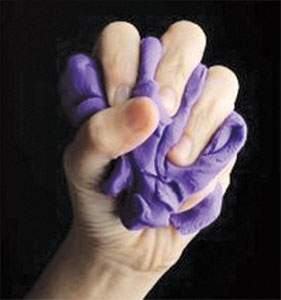|

Float or sink?
Have you ever wondered why some huge aircraft carriers and luxury
cruisers stay afloat on water while small objects such as a metal screw
sinks? The reason for this to
 happen
has nothing to do with the size of the objects or their weight. Whether
an object sinks or floats depends entirely on its density and its shape. happen
has nothing to do with the size of the objects or their weight. Whether
an object sinks or floats depends entirely on its density and its shape.
Long time ago, the Greek mathematician Archimedes discovered that
when he got into the bathtub, the water level in the bathtub rose. He
then came to the conclusion that for something to float in the water,
the upward push of the water must be the same as the weight of the water
displaced, or pushed aside by the object in the water. This theory
eventually led to inventions of many things.
Crafty vessels
You can test this theory by using different objects. As you need
something to float or sink in the water, why not build your own boat?
You can use some modelling clay and mould it into a solid shape like
a 'solid boat' (with no hollows) and drop it into a basin of water or a
bathtub. Watch how it sinks to the bottom of the water. Try making other
solid shapes such as a ball and check what happens when the object is
solid. Does it sink or float in the water?
Once you finish experimenting with solid shapes use your hands, a
rolling pin or a bottle and roll the clay till its flat and even. Now
mould a boat (not a solid blob shaped like a boat - but a typical boat
with the hollow in the middle). Curve the edges of the hollowed area to
shape the boat. Make sure there are no holes on it or the boat will
automatically sink!
Ready with your boat? Well, let's float it then. Gently place your
clay boat onto the surface of the water. If there are no holes, the boat
will float easily. If you use a glass or a see-through container to
float your little boat, you can observe how low in the water your boat
sits.

Mould the clay into a boat. |

The clay boat is afloat. |
Now, mark a water level line on the side of your boat. Because if you
want your boat to carry a load of goods safely without sinking, then the
boat must sit high in the water. Here are some tips to make your clay
boat 'sea-worthy'. You can mould different shapes of boats and
experiment but generally a high-sided shape floats better than a shallow
one. Make round-shaped boats and long-shapes ones. Don't forget to mark
a safe water level on your craft. Do you know what this 'safe water
level line' is called? It is known as the plimosoll line after Samuel
Plimosoll.
Let's check how your well moulded or hollowed clay boat stayed afloat
without sinking, like the solid clay boat.
It is because by making a boat shape (hollowed shape) you changed the
density of the solid blob. Solid clay is more dense than water and so it
naturally sinks. But the boat shape holds air which is less dense than
water.
So, this makes the overall density of the boat less dense than the
water. This allows it to float.
So, now you have evidence that the object's shape controls the amount
of water it pushes out of the way. If the amount of water pushed aside,
or displaced is the same or more than the weight of the object, the
object will easily float.
|

Boats of different shapes. |
However, if the amount of water weighs less than the object, then it
will automatically sink.
Make many more boats of different shapes and sizes and test this
theory. See how the different shapes affects the smooth movements of the
vessel.
Try moulding passengers or goods to place in your boat to observe how
added weight impacts the floating boat. |



